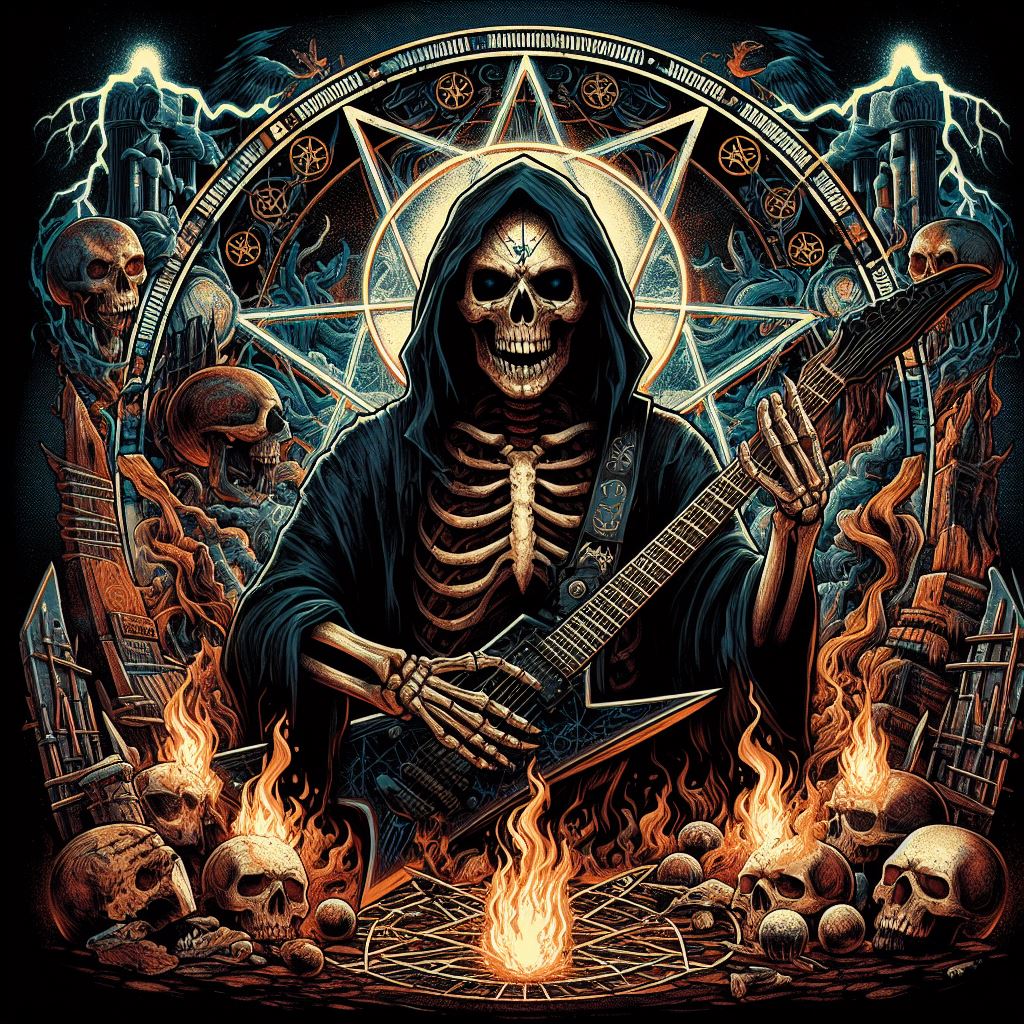Cannibal Corpse, a name synonymous with brutal death metal, has carved a bloody path through the music industry for over three decades. Hailing from Buffalo, New York in 1988, the band emerged from the ashes of local death metal acts, bringing together musicians like Alex Webster (bass) and Paul Mazurkiewicz (drums) who remain the band’s only constant members.
Their early influences were a potent mix of thrash metal giants like Slayer and Metallica, alongside the burgeoning death metal scene spearheaded by Possessed and Death. Cannibal Corpse took these influences and cranked them to eleven, crafting a sound defined by guttural vocals, pummeling drums, and technically impressive guitar work by Webster.
The band wasted no time in making their mark. A self-titled demo in 1989 caught the attention of Metal Blade Records, a label known for nurturing extreme metal. Their debut album, “Eaten Back to Life” (1990), was a brutal assault on the senses, establishing their signature lyrical themes of gore, horror, and social taboos. While these themes would become a point of constant controversy, they resonated with a growing underground fanbase hungry for the most extreme metal possible.
Cannibal Corpse’s follow-up albums, “Butchered at Birth” (1991) and “Tomb of the Mutilated” (1992), cemented their status as leaders of the death metal scene. Their music became even more technical and brutal, while their album covers, often featuring artwork by Vincent Locke, were so graphic that they were banned in Germany for several years. This notoriety, however, only served to further increase their notoriety.
Despite, or perhaps because of, the controversy, Cannibal Corpse steadily built a loyal following. They toured relentlessly, sharing stages with other death metal icons like Morbid Angel and Deicide. While their music received little mainstream radio play, their live shows became legendary for their intensity and technical prowess.
Throughout the 90s, Cannibal Corpse continued to refine their sound, releasing a string of critically acclaimed albums like “The Bleeding” (1994) and “Hammer Smashed Face” (1993). These albums showcased the band’s ability to balance brutality with musicality, with Webster’s bass lines weaving intricate counterpoints to the relentless guitar riffs.
The band’s vocalist position, however, has seen numerous changes over the years. Chris Barnes, the original vocalist, left the band in 1993 and has since rejoined and departed again. Other vocalists like George “Corpsegrinder” Fisher have left their mark on the band’s sound, ensuring a level of consistency despite the lineup changes.
The new millennium saw Cannibal Corpse continue to be a dominant force in death metal. Albums like “Violence Unimagined” (2001) and “Kill” (2006) showcased the band’s continued commitment to extreme music, while also demonstrating their ability to evolve and experiment within the confines of their genre.
Today, Cannibal Corpse remains a vital force in the metal scene. With sixteen studio albums under their belt, they hold the distinction of being the best-selling death metal band of all time, having sold over two million albums worldwide. Their influence on the genre is undeniable, inspiring countless bands to push the boundaries of brutality.
Cannibal Corpse’s legacy is one of unwavering commitment to their vision. Despite facing censorship and criticism, they have never strayed from their signature sound and lyrical themes. For fans of extreme metal, Cannibal Corpse remains a band that continues to deliver aural assaults of the highest order.

Leave a Reply
You must be logged in to post a comment.